Disconnect the driveshaft from the front axle gearbox (article - "Removing the driveshaft")
Disengage the housings of the inner joints of the front wheel drives from engagement with the gears of the front axle gearbox drives.
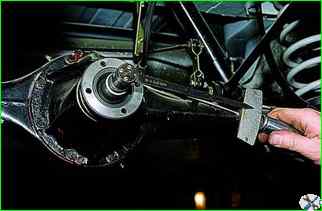
Use a dynamometer to turn the drive pinion clockwise by the flange mounting nut and determine its moment of resistance rotation.

Insert bolts into the flange holes and screw nuts onto them to create a stop.

Using a 24 mm open-end wrench or head, unscrew the flange nut, holding it from turning with a suitable mounting blade
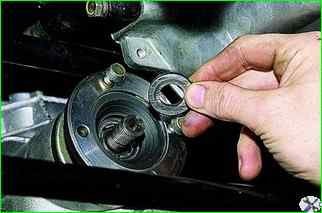
There is a washer under the nut, remove it
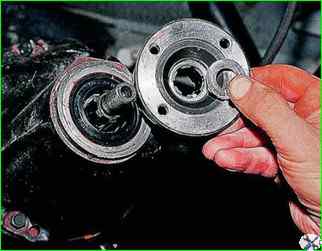
Removing the flange from the pinion

If you have a particular problem, you can press it off with a puller
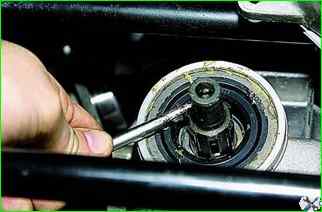
Pry off the oil seal with a screwdriver
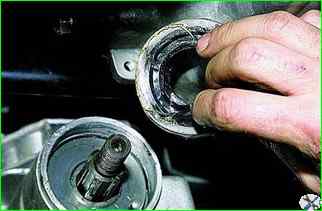
Remove the oil seal
Lubricate the working surface of the oil seal and press it in with a suitable head or a piece of pipe.
Install the flange and washer on the pinion.
Holding the flange, tighten the nut securing it to a torque of 118-255 Nm (12-26 kgf.m), periodically checking the torque of resistance to rotation of the pinion (by turning the pinion clockwise with a dynamometer).
If the initially measured torque of resistance to rotation was not lower than 59.0 Ncm (6 kgf.cm), then the new torque should be greater than this value by 9.8-19.6 Nm (1-2 kgf m).
If the initial torque was less than 59.0 Ncm (6 kgf cm), then tighten the flange mounting nut until the torque of resistance to rotation of 59.0-88.0 Nm (6-9 kgf m) is reached, without exceeding the tightening torque of 118-255 Nm (12-26 kgf m).
If, when tightening the nut, the torque of resistance to rotation of the drive gear exceeds 88.0 Ncm (9 kgf m), which indicates an excessive preload of the bearings, replace the spacer sleeve of the gearbox and perform adjustment again.
Further assembly and installation of the units is carried out in the reverse order.
According to the catalog, the oil seal of the drive gear of the main transmission is №2121-2302052





